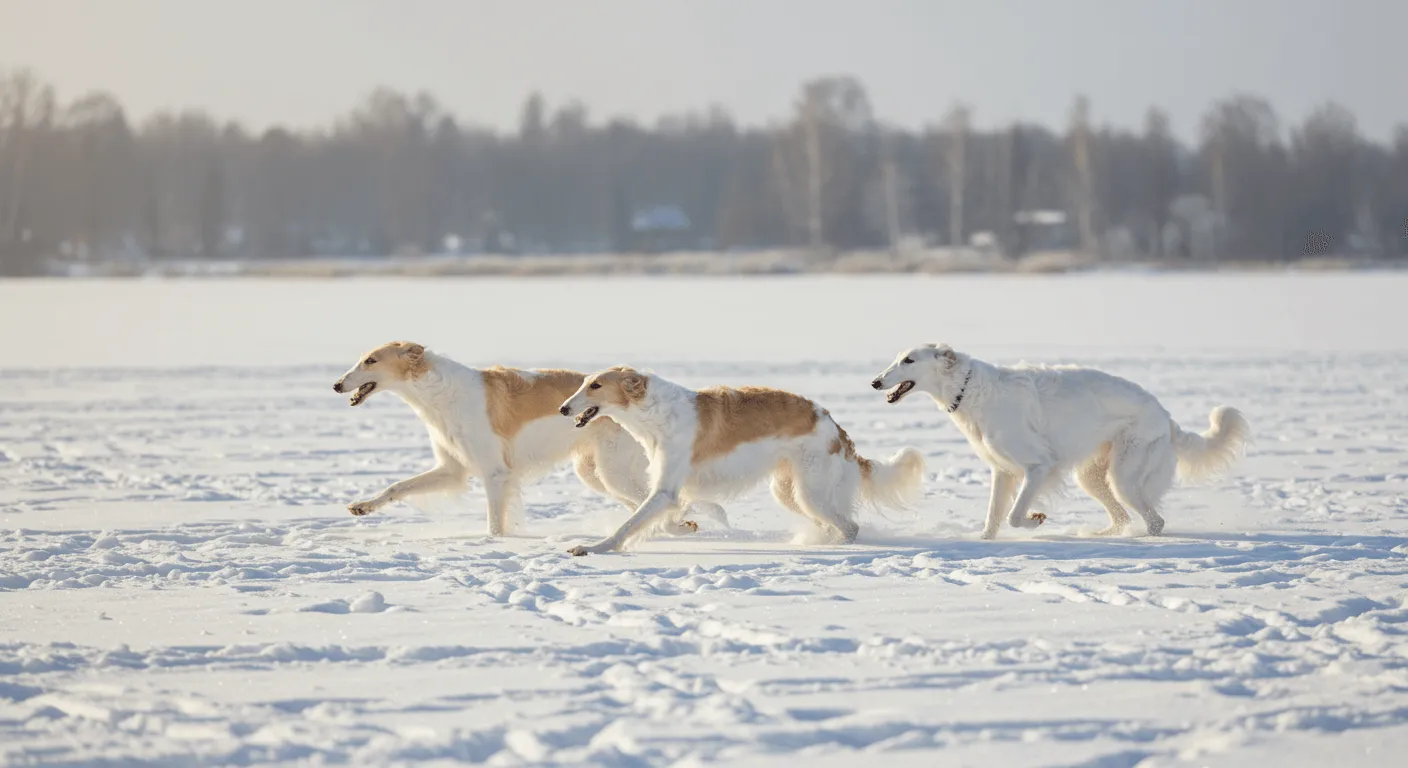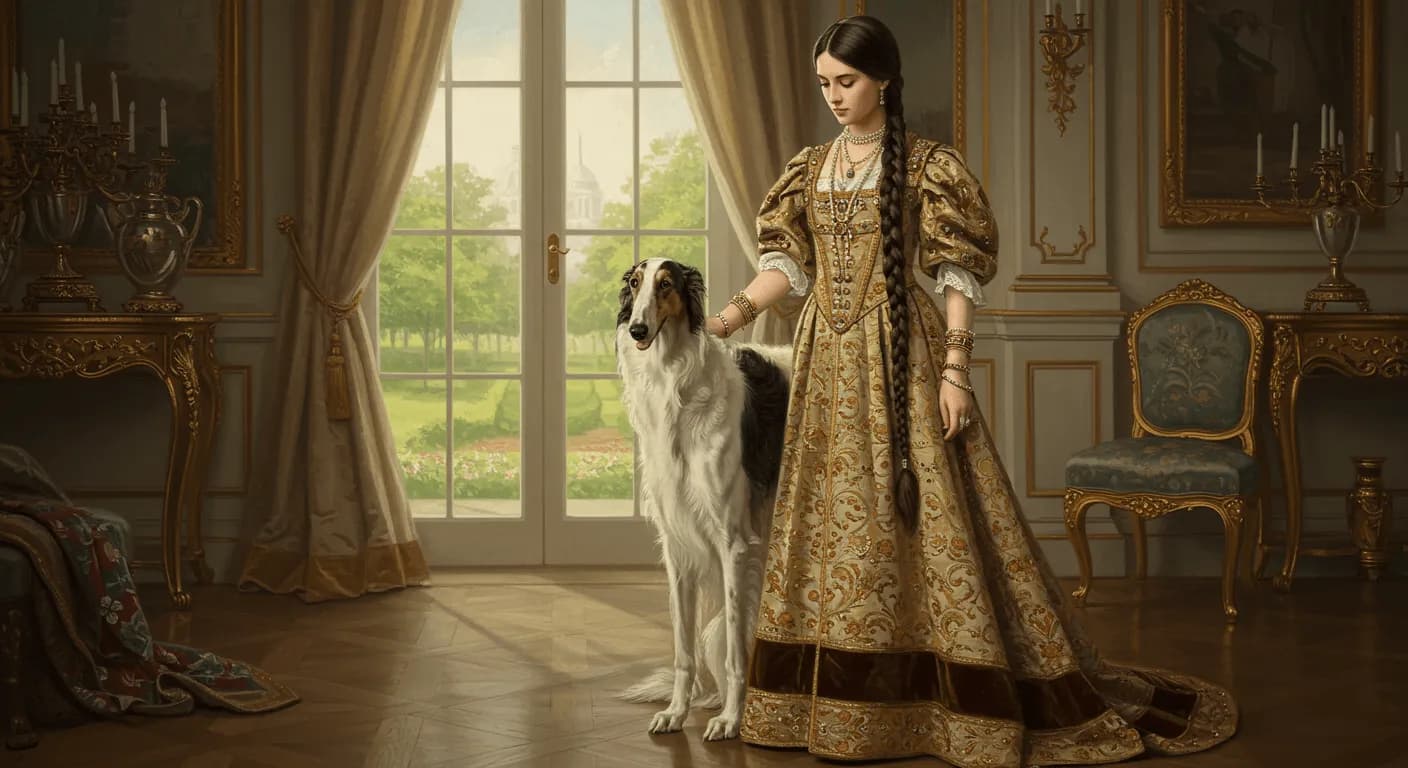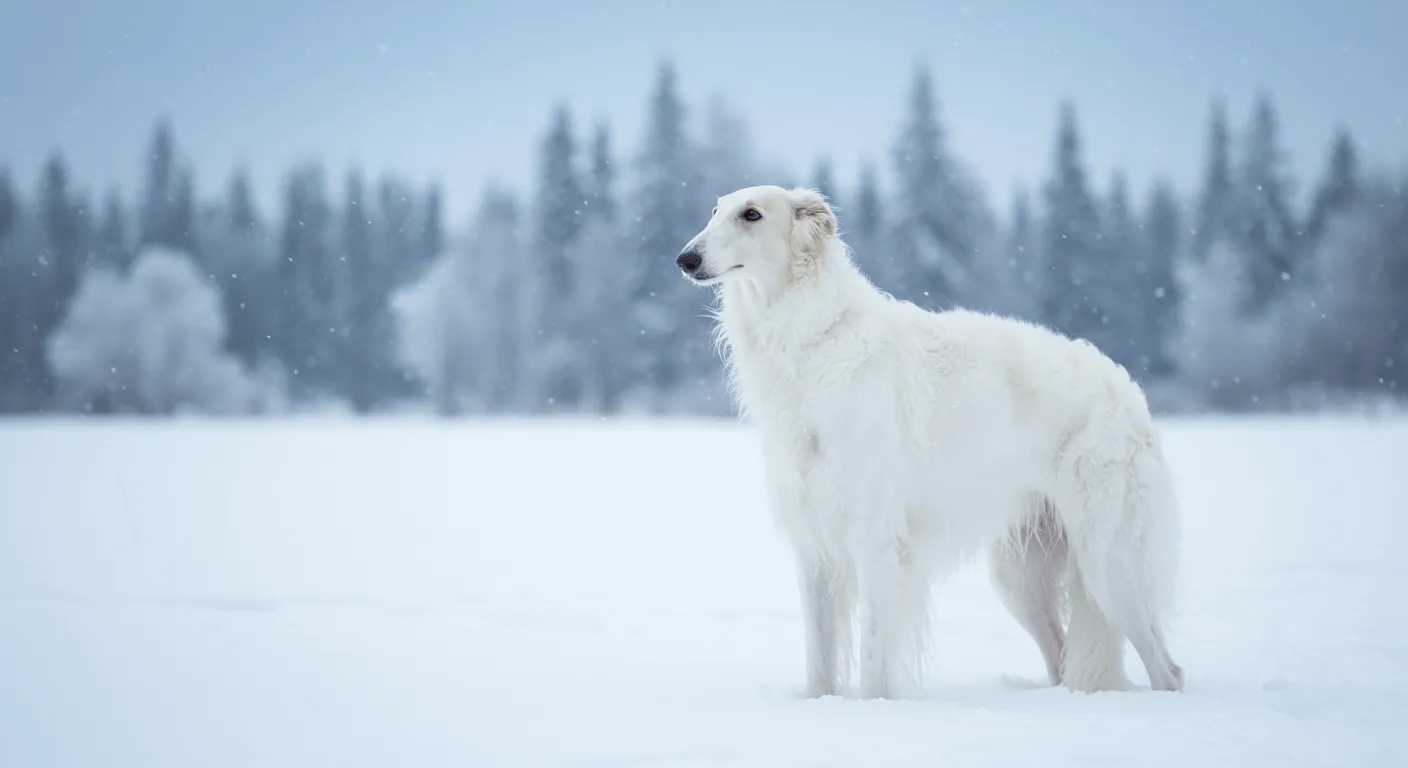The Borzoi is one of the most elegant and noble breeds in canine history—a dog as beautiful in function as it is in form. Known also as the Russian Wolfhound, the Borzoi boasts a regal lineage that spans centuries, connected to the aristocracy of Russia and the wide, cold steppes of Eastern Europe. In this comprehensive exploration, you'll discover the fascinating journey of this ancient breed. From where the Borzoi came from and how it was developed, to when the Borzoi was first bred and what this breed was originally used for, we'll uncover a detailed account of the Borzoi history and origin. Whether you're looking to learn about Borzoi bloodlines history, how the Borzoi got its name, or when it came to America, this article will guide you through all the essential milestones of its illustrious past.
The Early Origins of the Borzoi
The Borzoi traces its ancestry back hundreds, if not thousands, of years. While it is impossible to pinpoint the exact moment the first Borzoi-type dog stepped onto Russian soil, the breed’s origin is deeply rooted in Central Asia and the Russian steppes.
Earliest Known Ancestors:
The Borzoi’s earliest ancestors were likely ancient sighthounds that roamed the Central Asian regions and the Arabian deserts. These early hound-types, prized for their speed and vision-based hunting methods, made their way into Russia through migrations, trade routes, and possibly during the expansion of the Silk Road.
Their development was further influenced by:
- Early Saluki-type dogs from the Middle East
- Indigenous northern hunting dogs from Russia
- Mongolian Tribes’ sighthound-like dogs that traveled into eastern European zones
This rich intermixing of genetic traits gave rise to a formidably agile and elegant breed that could withstand the harsh environmental pressures of the Russian wilderness.
Where the Borzoi Came From
What country the Borzoi came from is undisputed: the breed originated in Russia. The term “Borzoi” itself is derived from the Russian word “borzyi,” meaning swift or fast, a tribute to the breed’s defining characteristic.
Original Native Landscape:
The Borzoi was developed in:
- The cold plains and forests of Western and Central Russia
- Expansive tundras, where sight and speed were essential for hunting

These environmental conditions shaped the Borzoi’s dense double coat, stamina, and long legs, each a critical adaptation for chasing wolves and other large prey through thick snow and open field.
Cultural Significance:
The Borzoi achieved symbolic status in Russian nobility. During the 16th century and onward, the breed became an icon of aristocratic identity. Owning Borzois signified wealth, status, and connection to royal bloodlines. This symbolic stature meant Borzois were often gifted by Russian Tsars to European monarchs, further expanding their fame and desirability.
When the Borzoi Was First Bred
Though regional hound-types were used for hunting for centuries prior, the early records of true Borzoi breeding date to the 15th and 16th centuries. During this time, Russian nobles took systematic interest in developing a refined sighthound that was both beautiful and lethal to wolves. Pack hunting of wolves was a common leisure sport and a practical necessity to protect livestock.
By the 17th century, purposeful and selective Borzoi bloodlines history began taking form. Influential breeders like the Grand Duke Nicholas Nikolaevich established formal kennels and records, laying the groundwork for modern Borzoi standards.
List of early milestones in Borzoi breeding:
- 1650s – First formal records of Borzoi used in aristocratic Russian hunts.
- Late 1700s – Crossbreeding with imported European Greyhounds to refine speed.
- Mid-1800s – Grand Duke Nicholas Nikolaevich’s Perchino Kennel established.
- 1873 – Breed standard codified for the first exhibitions.
- 1891 – Borzoi Club of America founded following the breed’s export to the U.S.
Historical Purpose and Role in Society
What the Borzoi was bred for is one of the most iconic features of its historical identity. Developed as a ruthless wolfhound, the Borzoi was an integral part of aristocratic Russia’s hunting teams. A typical hunt would feature nobles on horseback, flanked by teams of Borzois unleashed to chase and capture wolves.
Unordered list of Borzoi tasks throughout history:
- Wolf and hare hunting
- Protection of farmland from predators
- Symbol of royalty presented in portraits and tapestries
- Leisure and ceremonial pursuits of noble households

As gunpowder became more widespread and modern hunting methods took hold, the Borzoi’s working roles gradually diminished, and they transitioned into being impressive show dogs and companion animals. However, their hunting instincts remain sharp and instinctual to this day.
Naming and Nomenclature: How the Borzoi Got Its Name
The naming of the Borzoi reveals much about the breed’s cultural identity. The word “Borzoi” is derived from:
- Russian “Borzyi” — meaning “swift”
- Old Slavic roots with similar implications of speed and motion
In Imperial Russia, Borzois were often referred to as:
- Psovaya Borzaya (Псовая Борзая), meaning “fast-haired hound” or “wavy-coated sighthound”
This traditional name has regional variants and was often used to distinguish coat types and family lineages among hunting dogs.
The term “Russian Wolfhound” was the name used in English-speaking countries until the breed was officially renamed “Borzoi” in 1936 to reflect its authentic Russian roots.
Historical Contributions and Legacy
One cannot overstate the Borzoi’s contribution to culture, literature, and society. Not only did the breed serve a practical purpose, but it also held tremendous aesthetic and symbolic weight.
Influence on human activities:
- The Borzoi was prominently featured in novels, artwork, and royal propaganda.
- Famous literary figures like Leo Tolstoy referenced Borzois in works such as War and Peace.
- Borzois became motifs on vases, porcelain, jewelry, and fabrics throughout Europe in the 19th century.

Recognition in different historical periods:
- 1860s – Borzois exhibited in European dog shows
- 1890s – Exported to Britain and the U.S., marking international fame
- 1936 – CKC and AKC officially adopted "Borzoi" as breed name
- Post-WWII – Resurgence in breed popularity as a luxury and show dog
Borzoi Bloodlines History and Preservation Efforts
Throughout the centuries, Borzoi bloodlines history diverged between working lines versus show lines. Influential family kennels such as the Perchino, Malcev, and Woronzova lines maintained high standards with strict pedigree control. These lines have allowed modern Borzoi breeders to restore and maintain breed integrity worldwide.
While many noble lines were destroyed or lost during the Russian Revolution and World Wars, dedicated breed enthusiasts in Europe and the U.S. worked to revive Borzoi bloodlines with authentic pedigree documents and careful breeding practices.
When the Borzoi Came to America
The Borzoi came to America in the late 19th century, riding the wave of European fascination with Russia’s cultural exports. Borzois were exhibited in early American Kennel Club (AKC) shows by 1890s, and they quickly gained a following among elite American families.
By 1903, the Borzoi was officially recognized by the AKC. Breeders like Joseph B. Thomas played vital roles in importing dogs from the Perchino and Woronzova kennels to ensure America’s Borzoi population carried authenticated Russian bloodlines.
Key moments of Borzoi history in America:
- 1890 – First Borzois arrive in the U.S. from England and Russia
- 1903 – Full breed recognition by AKC
- 1910s-30s – Borzoi popularity boomed thanks to Hollywood endorsements
- 1936 – Adoption of “Borzoi” as official name, replacing “Russian Wolfhound”
How the Borzoi Was Developed
The development of the Borzoi involved stringent selection based on performance, elegance, and resilience. Unlike many Western breeds, Borzois were not just bred for looks—they were tested in actual wolf-chasing trials.
Breeders in Imperial Russia followed a unique three-fold criterion:
- Speed and stamina for field pursuits
- Aggressiveness and strength to take down wolves
- Grace and beauty to represent aristocracy
Dogs failing to meet pack standards were not bred. This natural selection process under functional conditions is what gave the Borzoi its enduring combination of power, grace, and intelligence.
Breeding of the Borzoi primarily involved deliberate combinations of:
- Sighthounds from Eastern Europe
- Asiatic hounds like the Kirghiz Taigan
- Indigenous long-haired Russian breeds
- Greyhound-type dogs introduced into noble kennels
The result? A distinguished, agile, and breathtaking breed that embodies the soul of Russia itself.## Conclusion
The Borzoi stands as a timeless symbol of refined beauty, aristocratic history, and functional elegance. From its roots in the harsh Russian wilderness to grand palaces and international show rings, the breed has journeyed through centuries marked by nobility, revolution, and global fascination. With a past steeped in selective breeding for speed, power, and grace, the Borzoi has earned its place not only as a skilled hunter but also as a cultural icon.
Understanding the Borzoi history and origin offers valuable insight into how environment, culture, and human needs shaped one of the world’s most distinguished dog breeds. Whether you are captivated by where the Borzoi came from, intrigued by how it was developed, or simply drawn to its serene and otherworldly presence, the Borzoi continues to enchant and inspire enthusiasts around the world. Today, it remains a living legacy of Russia’s majestic past and a beloved companion in homes across the globe.




